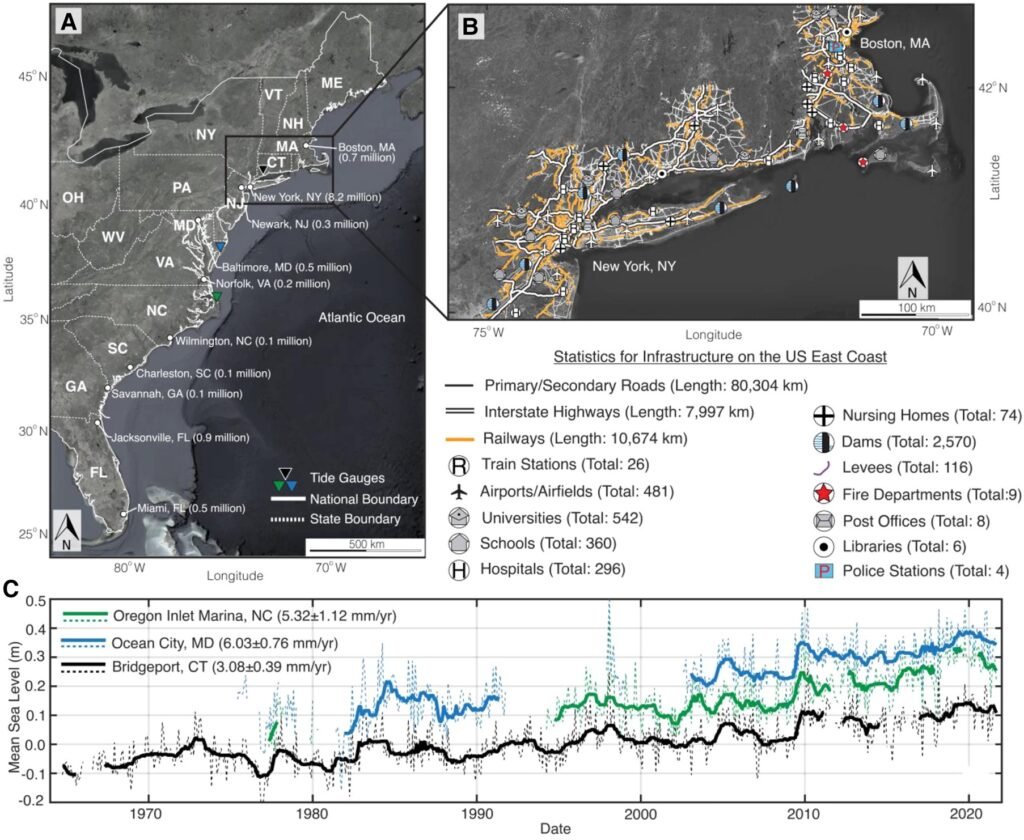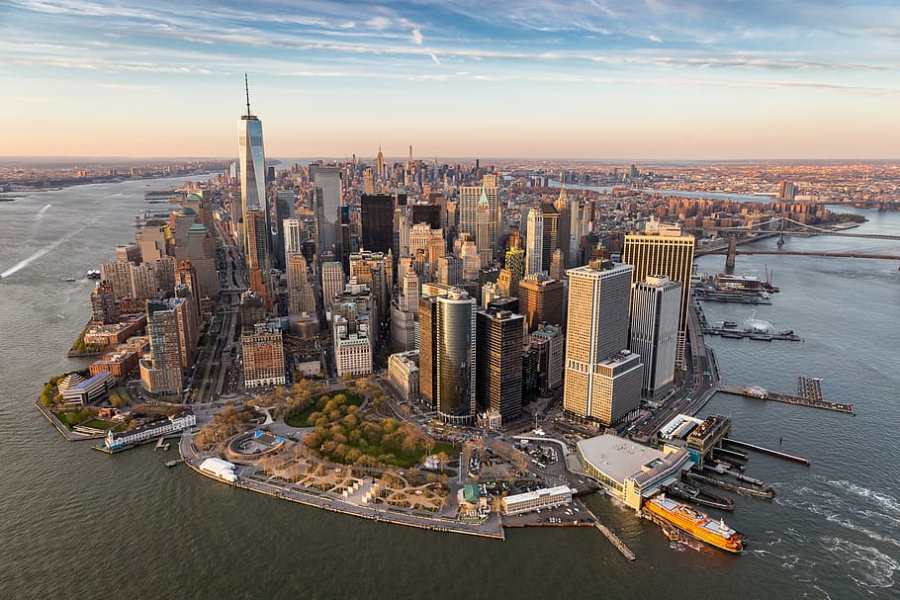A recent study conducted by researchers at Virginia Tech and the US Geological Survey has found that the East Coast of America, specifically its densely populated areas, is sinking at a surprisingly fast rate, as indicated by detailed satellite imagery.

The satellite imagery shows that cities like New York City, Baltimore, and Norfolk are sinking at rates of 1 to 2 millimeters per year. This could lead to significant damage to infrastructure and pose a threat to people and property if not addressed. The issue is worsened by the fact that the areas experiencing land sinking are in highly populated and heavily developed regions.

The East Coast is experiencing subsidence rates of two millimeters per year, which is causing problems for over two million people and 800,000 properties. Subsidence, the sinking or caving-in of land, is a very real and significant threat.
The potential sinking of New York City due to rising sea levels would cause significant damage to critical infrastructure such as airports and railways, as well as increase the risk of dangerous flooding.

If you feel hopeless, it is understandable. However, the researchers suggest that taking proactive measures to mitigate climate change could prevent more severe consequences of East Coast subsidence. Unfortunately, achieving a forward-thinking climate response is becoming increasingly challenging in a divided America.
Reference- Journal PNAS Nexus, National Geographic, The Washington Post, Futurism,CNN






